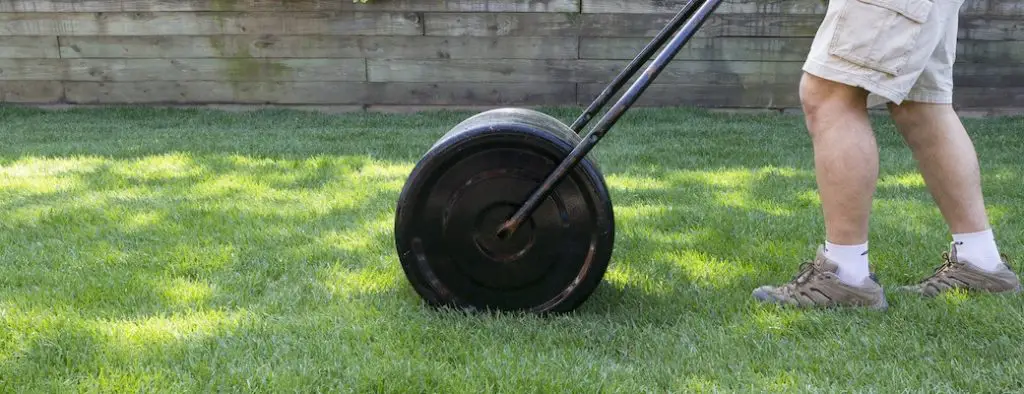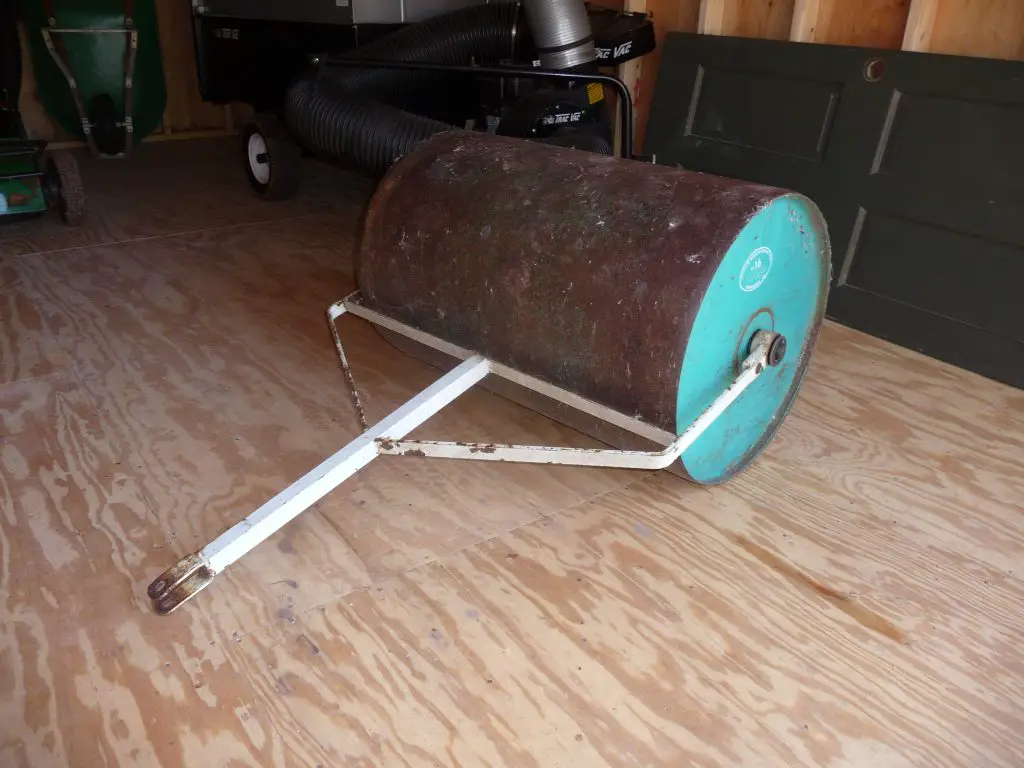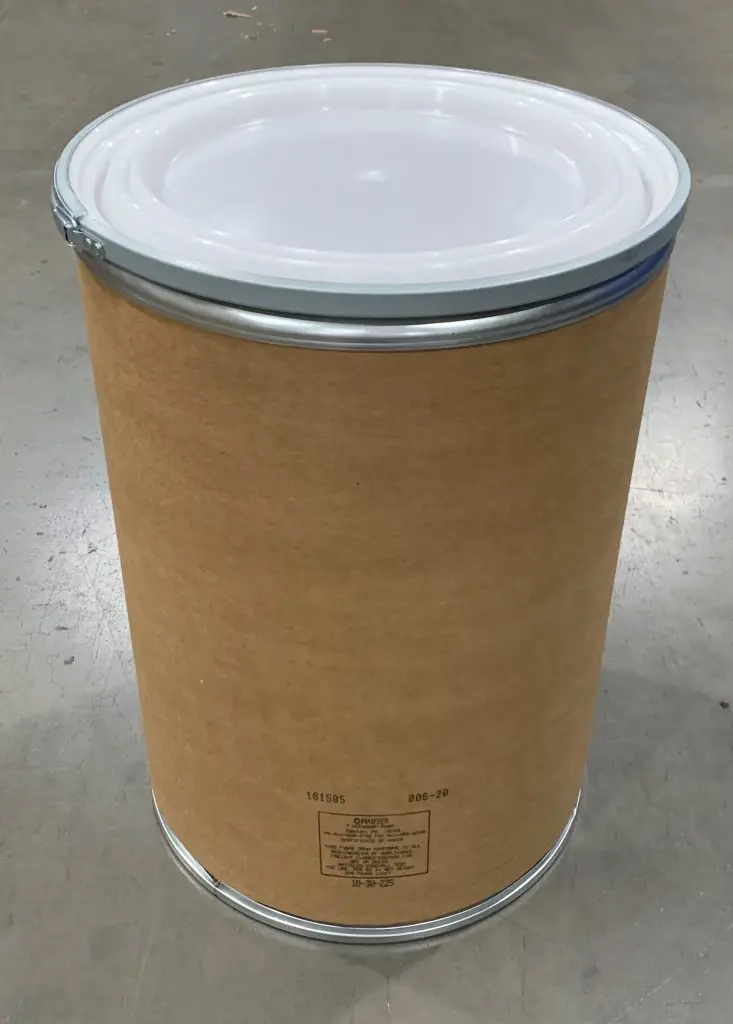In this article you will learn how to make your own DIY lawn roller, what lawn roller alternatives there are, as well as when and if you even need to use a lawn roller.
What is the purpose of lawn rolling?
Lawn rolling is a method most often used on commercial lawns such as golf courses, sports fields, or turf that serve a decorative purpose. What lawn rolling does is smooth out the ground’s surface and get rid of any bumps, hills, or dips. This is not only to attain an even, more attractive lawn but also important for the lawn’s overall health.
Uneven earth will create water pooling in low spots and drying out in higher spots. A lumpy lawn can also be more tiresome to mow. A completely leveled yard will ensure all grass can be cut to the same level and maintain the same rate of growth. However, rolling your lawn should only be done when absolutely necessary – excessive lawn rolling will compact the soil, making it difficult for roots to breathe.
Top 3 Lawn Roller Alternatives
Most hardware stores have lawn rollers available for rent for a reasonable fee. Otherwise, you can buy a lawn roller – a hefty investment at somewhere between 100 – 150 dollars. Lawn rollers often have the option of being used behind a garden tractor. This one from Brinly is quite popular on Amazon.
Alternatives to buy a Lawn Roller

Want to flatten your bumpy lawn without a lawn roller? There is another way. If the high and low spots on your lawn are large enough for you to notice, mark them. Wait until late spring and then either dig out some soil or fill it in. It might be a good idea to either add some plugs or grass seed over the area to make sure the lawn area will bounce back and blend evenly with the rest of your lawn.
Leveling Your Lawn by Filling In
If you see dips in your lawn that are sunken no more than an inch or so, use a combination of topsoil and compost mix over top of the grass. Do this in spring, so your turf has a chance to grow up and through the new layer of soil during its growing season.
If the dips are deeper, cut 2-3 inches down along the diameter with a square-headed shovel. Make two more incisions perpendicular to the first cut on either end. Gently peel the grass and its roots back and fill with the topsoil and compost mixture. Make sure the added soil is loose so the roots can easily breathe and have to grow. Fold the flaps of turf back over the hole and tread on the area lightly.
Leveling Your Lawn by Removing Soil
Use the same ‘I-shaped’ cutting method with a shovel to create flaps on any high or raised spots on the lawn. Peel back the flaps, being careful to keep the roots intact. Dig out some of the soil until it is level with the rest of the lawn and break up the remaining soil in the ground, so it is loose. Fold the grass back over the soil and tread on it, so the roots meet the soil. Water generously afterward.
DIY Lawn Roller
It might be worth making the investment if you foresee packing down a lot of soil in your future. However, anything heavy and round that can be pushed or pulled around a yard will do the job. Fortunately, there are multiple ways to makeshift your own lawn roller at home for much less.
Lawn roller alternatives can be made at home without much hassle, depending on the materials available to you. We have tested three different DIY lawn rollers to see which is the most effective.
55 GALLON DRUM

This is by far the most popular DIY lawn roller. If you can get your hands on a 55 gallon drum (ask around at the gas station or try to search Craigslist), you can simply fill it with water or sand to the exact weight you need. For heavy duty jobs, like leveling the yard, fill it all the way up.
If rolling a lawn just after laying down sod, it will help the roots make contact with the soil. In this case, you don’t want to use a roller that is too heavy and risk too much compaction – fill the drum only two-thirds of the way.
Find some way to fashion a large handlebar or use an old tractor hitch if you plan on pulling it behind a vehicle. This may require a little bit of metalwork, as you will need to drill a hole on either end to stick the handle through.
CARDBOARD DRUM

A cardboard drum is also a good option, especially because it is even and without ridges like a 55 gallon drum. The lighter starting weight also means there is less risk of soil compaction and therefore choking the grass roots. Again, you can adjust the weight accordingly with sand. A cardboard drum may be a little bit more difficult to get your hands on, and will require the same amount of metal work and a gallon drum.
DIY CONCRETE LAWN ROLLER
Another alternative, if you have the capacity and opportunity, is to make your own concrete lawn roller. This is a little more labor-intensive, and the downside is the weight will not be adjustable once it is finished. It is also key to remember that a very heavy roller can damage a lawn. Grassroots need room for air and water to circulate around them. Soil compaction will occur if there is too much weight in the lawn roller.
See the video above for a great step by step on how to make your own lawn roller out of concrete.
How Do I Know When to Use a Lawn Roller?
It may be that for you, lawn rolling is completely unnecessary. You might notice some unevenness when you start mowing in the spring due to frost heave during the winter. However, it is most likely that problems like these will resolve themselves. Frost heave is a result of water freezing in the ground, causing the soil to expand. As the ground heats up the moisture will redistribute itself and for the most part these lumps will smooth out on their own.
It is best to use a lawn roller or lawn roller alternative when you notice low spots in your lawn that are collecting too much water or high spots that are drying out. It is also highly recommended before seeding a new lawn to give the new grass the best possible chance to grow evenly from the start. In the case of sodding vs seeding, it can be a good idea to use a lightweight lawn roller on after newly laid sod so the roots can come in contact with the soil.
How Often Do I Need to Roll My Lawn?
There is no need to use a lawn roller or lawn roller alternative ‘just for kicks.’ It is not a standard part of lawn care, but rather a solution for those experiencing a lawn so uneven that it is hindering turf growth or making mowing difficult.
Lawn rolling usually only needs to be done once a season, in the spring. Once the ground has had a chance to thaw and warm up, any inconsistencies due to frost heap can be smoothed out with a lawn roller. Pick a sunny day, so the ground is as warm as possible. Make sure the lawn is watered, but not soggy. Leveling a wet lawn with a lawn roller will only encourage soil compaction.
When pushing or pulling your lawn roller, it is vital to stick to a consistent pattern. Go back and forth across your entire yard in straight, even lines. Then go back over the whole lawn, making stripes perpendicular to the initial ones. This is important for ensuring the entire lawn gets rolled onto the same level.
If you are going to level your lawn, whether using lawn roller alternatives or a manufactured one, it is important to aerate the lawn at least once a season. This is to reduce the risk of slowing down growth due to soil compaction – aerating lets the roots breathe again. It is recommended to aerate in the fall.
We recommend products from companies like Amazon, which we also get a small commission from, to keep this website running. However, we want to stress that all of the products we recommend are tested, used by us, and 100% unbiased and true.

